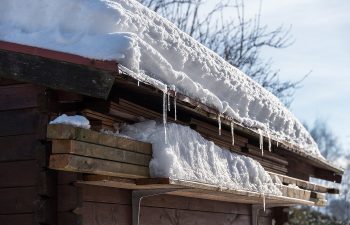
Pressure-treated landscape timbers can be a fantastic addition to any garden or outdoor space. They provide structure, help with soil erosion and can even enhance the aesthetics of your landscape. However, like any outdoor material, they have a lifespan, and it’s important to know when it’s time to replace them. Here are some signs to look for that indicate your pressure-treated landscape timbers may need an update.
Visible Decay and Deterioration
One of the most obvious signs that your landscape timbers need replacing is visible decay. Look for any signs of rot, especially at the ends of the timbers where moisture often collects. Check for soft spots that indicate internal decay or crumbling wood. If the timber feels spongy when pressed, it is a strong indicator that it has lost its structural integrity and should be replaced.
Severe Warping or Cracking
All woods expand and contract with changing weather conditions, but excessive warping or cracking can signal that your timbers are reaching the end of their life cycle. If the timber has split significantly, it may no longer provide the necessary support for your garden beds or paths, making it unsafe or ineffective.
Fading Color
Pressure-treated timber starts with a rich, green color indicative of its treatment. Over time, however, exposure to sunlight can cause the color to fade, which may simply be cosmetic. If the fading is coupled with signs of decay or other structural issues, it could mean that the protective treatment has worn off, leaving the wood vulnerable to rot and insects.
Unexpected Pest Activity
If you start to notice an increase in pests around your landscape timbers, such as ants, termites or other wood-boring insects, it could be time to replace them. Pests often infest decaying wood, so if the timber shows signs of insect activity, it’s best to act quickly before they spread to other parts of your garden.
Mildew or Mold Growth
Landscape timbers are often exposed to soil and moisture, which can lead to the growth of mildew or mold. While some mold is normal, excessive growth can indicate that the wood is retaining too much moisture and may be starting to rot. If mold or mildew persists despite cleaning efforts, replacing the timber is advisable.
Shifting Position or Structural Instability
If you notice that your landscape timbers have begun to shift, lean, or otherwise move from their original position, they may not be providing the support they once did. This can be due to deterioration or soil erosion. If they can’t hold their position, consider replacing them to maintain the integrity of your landscape.
Change in Landscaping Needs
Sometimes, the need to replace landscape timbers does not stem from physical deterioration but from changes in your landscaping needs. If you’ve redesigned your garden or added new features, it may be time for a timber update to match your updated aesthetic or functional goals.
Cumming, GA, Pressure Treated Landscape Timbers
Regular inspection of your landscape timbers is essential for maintaining the beauty and integrity of your outdoor spaces. Contact Southern Landscape Supply in Cumming, GA, when it’s time to replace old landscape timbers. We can help you select the best ones and arrange delivery to your site.
